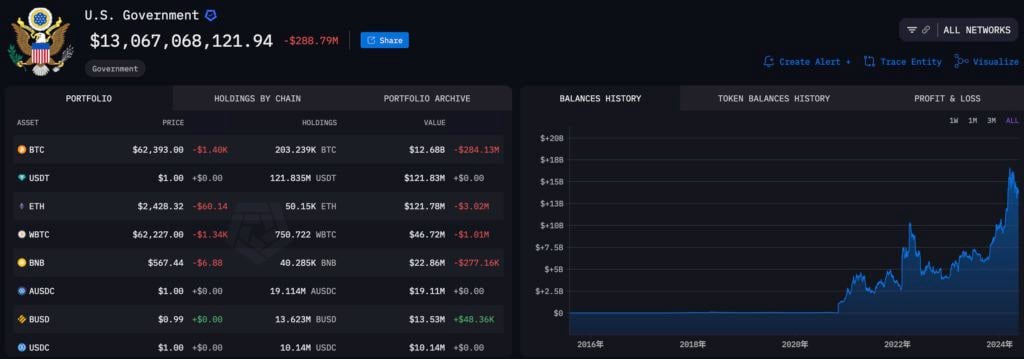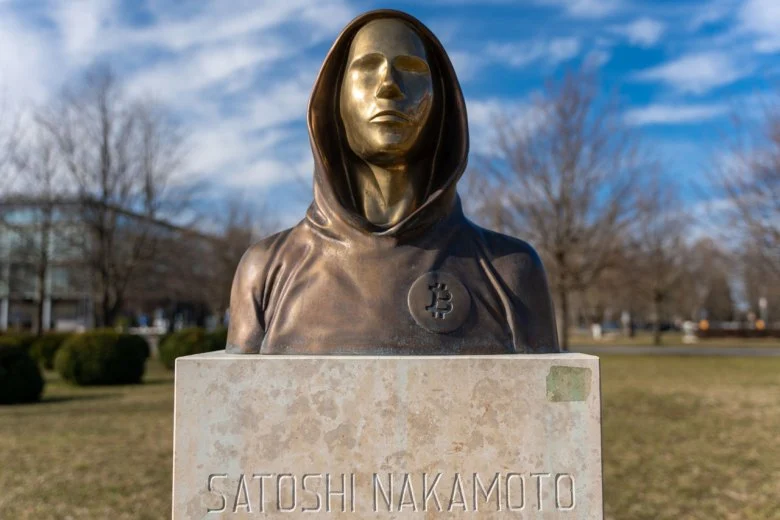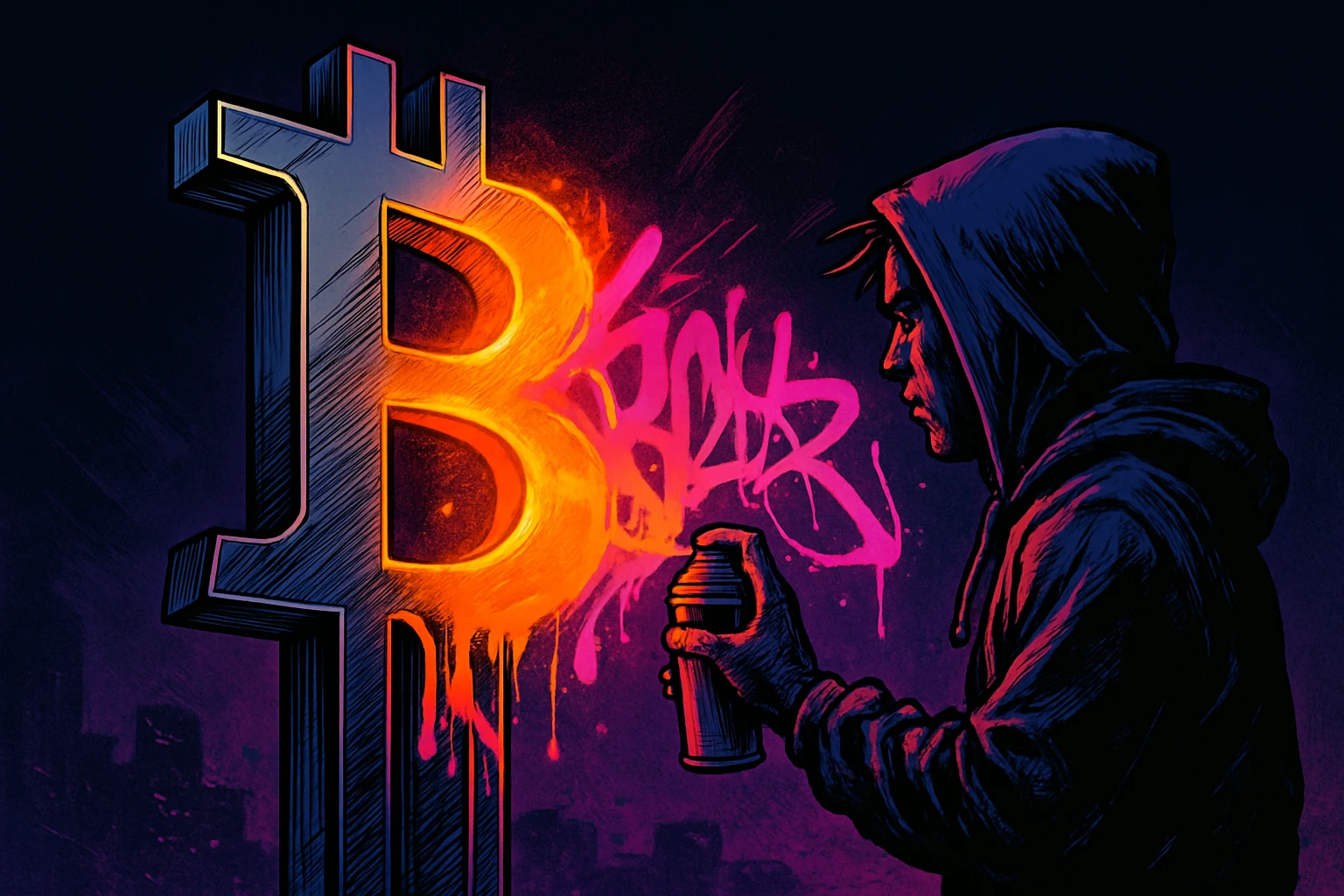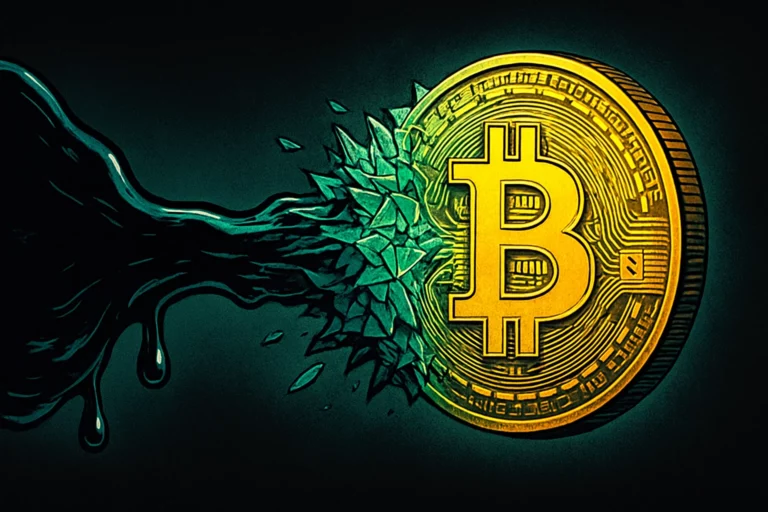Bitcoin faces a new threat: the indifference of the younger generation. From a rebellious pioneer to an institutional darling, how can Bitcoin reignite youthful enthusiasm and win over Generation Z? This article is based on an article by Christina Comben of TechFlow, compiled, translated, and written by Foresight News.
![图片[1]-Bitcoin is entering a “midlife crisis”: How did veteran Crypto win over Generation Z?-OzABC](https://www.ozabc.com/wp-content/uploads/cover-image-bitcoin-z-generation-youth-crisis-crypto-adoption-challenge-800x533.webp)
CompareWhen Bitcoin was first created, it was just an inconspicuous “niche phenomenon.” It was neither an innovation from Silicon Valley nor the result of a meeting of central banks around the world. On the contrary, Bitcoin emerged in the aftermath of the global financial crisis, at the perfect time, and with a profound disruptive nature.
Satoshi Nakamoto, a mysterious figure, published a white paper on the Cypherpunk mailing list, proposing to create a peer-to-peer payment network that could bypass the loopholes in the financial system that existed after 2008.
At that time, Bitcoin was an “adversarial currency,” a tool for direct resistance against bailout programs, bank failures, and central planning. Early holders saw themselves as “digital rebels,” building the infrastructure for a new kind of “free currency”—uncensored, borderless, and unconstrained by the whims of officials or the failures of outdated institutions. On January 17, 2009, Satoshi Nakamoto posted:
“Perhaps it’s better to buy some Bitcoin, just in case it really becomes popular. If enough people think that way, then it will become a self-fulfilling prophecy.”
From “Rebellious Pioneer” to “Institutional Darling”
In 15 years, Bitcoin has evolved from an obscure technical white paper into a global currency network worth over $2 trillion. The once-distant “regulatory approval” has finally seen the light of day: initially, it was cautious probing by regulatory agencies, but later it became official recognition dominating headlines. On the anniversary of Bitcoin’s birth, US Treasury Secretary Scott Bessant commented:
“Seventeen years after the white paper was published, the Bitcoin network is still running stably and is more resilient than ever before. Bitcoin will never ‘crash’.”
From the listing of spot ETFs and the investment of billions of dollars on Wall Street, to the passage of relevant legislation by the US government and the inclusion of Bitcoin in the balance sheets of listed companies—each milestone signifies that this “first-generation rebel” seems to have conquered one peak after another.
But accompanying this “legitimacy” comes a more insidious and slowly escalating threat: “relevance.” The vitality of a technology that can shake the world depends entirely on whether the “narrative” it carries can resonate with the audience. And the younger generation clearly doesn’t buy into Bitcoin’s narrative.
Bitcoin’s “death announcements” are piling up.
Writing “death obituaries” for Bitcoin has become a tedious routine (it could even be called an “industry”). Whether it’s the ambiguity of the early code, the catastrophic hack of the Mt. Gox exchange, China’s mining ban, the severe crackdown by regulators, or the potential threat posed by quantum computing, there have been more than 450 headlines declaring “Bitcoin is dead” to date.
Warren Buffett, the “Oracle of Omaha,” once called Bitcoin “a worthless asset”; JPMorgan Chase CEO Jamie Dimon mocked it, saying:
“I have always been completely opposed to cryptocurrencies and things like Bitcoin. Their only real use is to facilitate money laundering and tax evasion for criminals, drug dealers… If I were a government, I would ban it outright.”
However, each crisis seems to strengthen Bitcoin’s “immunity.” Regardless of regulatory panic, security incidents, or bear market winters, the Bitcoin network always continues to operate, blocks are constantly being generated, and a new narrative is born: Bitcoin is “unstoppable.”
This belief has permeated all levels of society, and even Russian President Vladimir Putin has publicly stated:
“Bitcoin, who can ban it? Nobody can. And who can ban the use of other electronic payment tools? Again, nobody can—because these are all brand new technologies.”
In fact, for the digital-age millennials, Bitcoin has long been the “spiritual successor” to gold: it is resilient and (if “survival” can be considered an advantage) almost “immortal”.
But as Jameson Lopp, chief security officer of cryptocurrency security company Casa and a Bitcoin security expert, previously told CryptoSlate: the biggest threat to Bitcoin is not technological breakthroughs or regulatory battles. By 2025, the real threat is “indifference”—too few young people are willing to pay attention to it.
Generation Z: No money, no Bitcoin
“Generation Z” (Zoomers) is a generation born with iPhones and Instagram, and raised watching YouTube and TikTok. They are entering adulthood amidst the weariness of “late capitalism” and are rewriting the rules of the economy.
The average Gen Z graduate faces stagnant wages, no hope of buying a home, the disappearance of entry-level jobs, and soaring credit card debt. When the boundary of the “future” is only the next paycheck, why bother saving for tomorrow? As Sean Ristau, Vice President of Digital Assets at InvestiFi, told CryptoSlate:
“Bitcoin was initially a direct challenge to the financial system, a form of protest. Now it’s more like ‘digital gold,’ mainly controlled by giants and banks. This image simply doesn’t resonate with young people struggling with inflation, debt, and rising living costs.”
No matter how “strong” Bitcoin appears in the market, many Gen Zs see it as carrying a questionable “baby boomer vibe.” Bitcoin’s earliest proponents bear the “battle scars” of the 2008 financial crisis, while Gen Z is only familiar with tokens like Meme Stock, Robinhood Options, and Dogecoin.
Jeff Park, Chief Information Officer of ProCap BTC and Advisor at Bitwise, warns that Bitcoin’s narrative must change. He believes that Generation Z is looking for “meaning,” not an inflation hedge.
“Ultimately, if young people don’t accept Bitcoin, then the entire logic of Bitcoin will collapse.”
In a recent episode of the “The Story of Bitcoin” podcast, cryptocurrency advocate American HODL also acknowledged:
“The lack of interest in Bitcoin among Generation Z is a big problem—because they are too ‘nihilistic.’ We must continue to actively reach out to them, try to awaken them, and tell them: ‘Brother, for your own safety and for your own good, take action now while there’s still time!’ Both of these reasons are important.”
Political Context: The Bitcoin Holding Battle Between the Red Party and the Blue Party
The partisan divide surrounding Bitcoin has never been more acute. As the Biden administration intensified its “Choke Point 2.0” crackdown on cryptocurrency companies, the Democrats adopted the stance that “cryptocurrencies are harmful, and regulation is essential.”
Conversely, Republicans in the MAGA camp, the core of libertarianism, and some moderate centrists now see supporting Bitcoin as a way to “demonstrate fiscal independence and national rejuvenation.”
(Note: MAGA is an abbreviation for “Make America Great Again,” which was originally a core slogan proposed by former US President Donald Trump during his 2016 presidential campaign and later became a symbolic ideology for his supporters, related political movements, and the conservative camp.)
But Generation Z is completely uninterested. They flock to online communities where “unity trumps speculation.” Bitcoin’s political narrative, originally about “freedom from government control,” now clashes with growing economic anxiety—and widespread distrust of the US government and indeed all institutions. Park warns:
“There’s a reason why left-wing candidates don’t support Bitcoin in elections—not because they’re afraid of the ‘system,’ but because they believe supporting Bitcoin would harm their own interests. That’s definitely a bad thing. For Bitcoin to succeed, it must become a shared platform for ‘Bitcoin and Mandani (left-wing politicians),’ not the exclusive tool of ‘Bitcoin and Ackman (right-wing capitalists).'”
While Trump and a growing number of Republicans touted Bitcoin as a “patriotic technology,” left-leaning Generation Z turned to socialist leaders like Zoran Mandani. In their eyes, Bitcoin became a “liberal’s side hustle” (or worse), part of the “old guard.” From any perspective, it’s no longer the “rebel” that understood street culture.
Why does Bitcoin’s philosophy fail to resonate with young people?
Bitcoin’s initial core claims—”freedom from bank control, inflation-resistant savings, and the inviolability of digital assets”—have barely generated any enthusiasm among young people. For them, money isn’t like a “fortress to be protected,” but rather “points in an infinite game”: constantly circulating and changing. As Jamie Elkaleh, Chief Marketing Officer of Bitget Wallet, told CryptoSlate:
“Generation Z’s investment culture is faster-paced, more social, and relies more on memes for dissemination. They prefer community-driven tokens, AI-related assets, and the creator economy—because these things give them a sense of ‘participation’ and align with their digital behavior habits. Young users often view Bitcoin as ‘assets of funds and treasuries’ rather than ‘platforms they can directly participate in’… While Bitcoin’s narrative of ‘digital gold’ can bring a sense of security and prestige, it lacks ‘interactivity’ and ‘goal-driven vitality’—and these two points are precisely the core demands of this generation in participating in financial activities.”
Ristau added:
“Cryptocurrency ownership is rising rapidly (more than half of Gen Z have owned digital assets), but Bitcoin’s audience remains predominantly older, wealthier, and male. Younger users are chasing something entirely different: meme coins with clear objectives, AI-related tokens, and fun, practical, or community-driven social or gaming projects. So, where exactly is the problem?”
Is it a “demographic structure problem” or a “demographic structure opportunity”?
Is it any wonder that young people under 25 are increasingly disillusioned with the world and their own circumstances? High inflation, blocked wealth accumulation channels, and a complete distrust of the institutions their parents relied on are all realities they face.
Paradoxically, this predicament might trigger the next wave of Bitcoin adoption. Grant Cardone, CEO of Cardone Capital, told CryptoSlate:
“There is no such thing as a ‘youth dilemma’ with Bitcoin. The real problem is not the age of the holders, but their mindset. Some people tell Generation Z to ‘trade Meme coins, not accumulate wealth,’ so they chase quick money instead of long-term assets that can be passed down. Bitcoin is designed for ‘people with a long-term vision’—people who understand that ‘control, scarcity, and freedom’ are the foundation of wealth.”
From this perspective, Bitcoin’s so-called “demographic problem” is more like a “demographic opportunity.” A new trend led by a generation eager for digital ownership may be on the horizon. As Elkaleh emphasized:
“Bitcoin’s ‘youth dilemma’ stems from the widening gap between its ‘institutional maturity’ and ‘cultural relevance.’ Young investors’ willingness to hold has not disappeared, but their ‘first touchpoint’ with cryptocurrencies is increasingly ‘culturally relevant assets’ rather than Bitcoin. While institutions and ETFs have enhanced Bitcoin’s credibility, they have also shifted its focus away from ‘grassroots groups’ and ‘native online communities.'”
Bridging the Gap: How Can Bitcoin Integrate into Youth Culture?
So how can Bitcoin break free from its current “older investor dominance” and attract creators, gamers, and digital entrepreneurs among Generation Z? The answer lies in “utility, trust, and cultural integration.” Cardone’s perspective is straightforward:
“Bitcoin doesn’t need to ‘change itself’ for Generation Z; rather, Generation Z needs to ‘clearly understand Bitcoin.’ But I can tell you that to make Bitcoin more attractive, three things must be done: education, empowerment, and experience.”
Ristau believes the focus should be more on “Bitcoin’s practicality” and “its growing global applications.” He points out:
“Inflation-resistant, financially free, and lower global remittance costs—these are all key selling points. In recent years, cryptocurrency remittances have increased by more than 400%. This should be the core of the marketing campaign.”
Elkaleh also emphasized that Bitcoin’s narrative needs to be “refreshed” and must be firmly rooted in “utility”:
“Equally important is updating the narrative framework. The positioning of Bitcoin as ‘digital gold’ may resonate with institutions and long-term investors, but it fails to explain Bitcoin’s ‘practical value’ for ordinary people. For younger users, Bitcoin’s ‘relevance’ lies in what it can ‘achieve’—privacy protection, self-custody, censorship resistance, and support for philanthropic transactions. Only by combining these core principles with specific scenarios such as ‘cross-border remittances’ and ‘community donations’ can Bitcoin’s significance transcend ‘price fluctuations’ itself.”
Bitcoin has faced more existential threats than any other digital product. It survived the pessimistic pronouncements of Wall Street giants and withstood pressure from regulators. But perhaps its greatest threat is the “loss of its youthful spark”—the rebels, dreamers, and builders who gave Bitcoin its soul.
Will Bitcoin ultimately become a “museum exhibit” or a “world-changing currency”? The answer, as always, depends on “how many people are willing to take up its torch”.
Ultimately, the survival of “free money” depends on its ability to shift its narrative from “inheriting assets” to “telling meaningful stories.” Bitcoin should never have been “boring” from its inception. To continue developing over the next decade and beyond, it needs “vitality,” not just “value.”

















